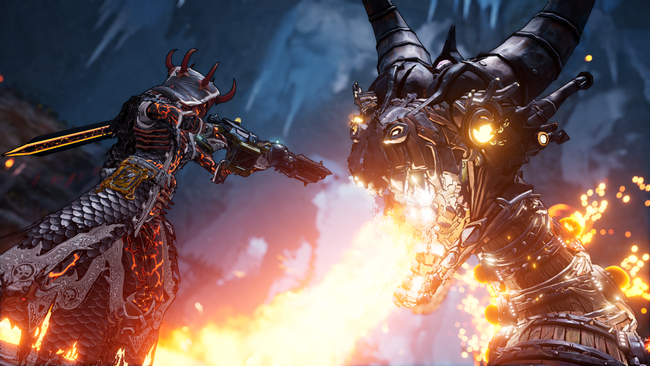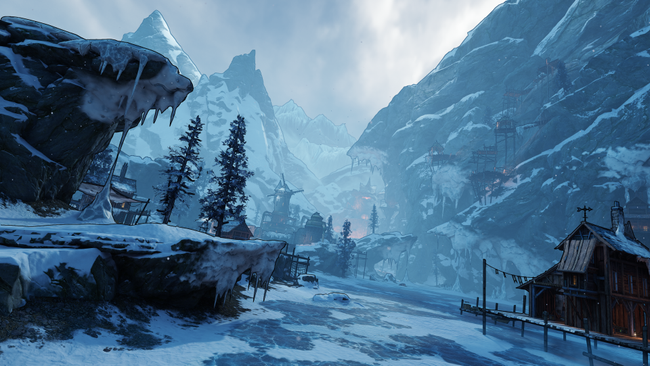
Tiny Tina's Wonderlands is a promising new take on Borderlands
When I think of Tiny Tina's Wonderlands, I can't help but think back on Borderlands: The Pre-Sequel. A sort-of, but not really, spin-off which played hard and fast with some of the series' conventions, and took a stab at characterizing characters that might not have gotten much love in Borderlands 2. I can understand why, too - Tiny Tina's Wonderlands is a bit of a weird egg. Instead of it being a proper spin-off, it's more like a sequel to a now-standalone DLC for Borderlands 2. Even though much of the gameplay and its systems remain the same, everything is now wrapped up in something akin to a "fantastical" design, where "Sci-Fi" has mostly been swapped out for the arcane, and steampunk, aesthetics.
When I sat down to start my demo playthrough, I found it was impossible to miss the main conceit of Wonderlands - everything you're doing in-game isn't meant to be "real" to the Borderlands universe, but rather a visual representation of Tiny Tina's group DnD session. Player commentary is sprinkled throughout the whole affair, and it's even clear that some NPCs are voiced such that it's obvious that they're merely Tina herself putting on an accent. While I'm not sure the gimmick will be enough to keep my attention for a full game's worth of content, it's at least enough to garner my attention - and if nothing else, I can't deny that it's still mostly untrodden territory for the series as a whole.

There's absolutely charm in helping a goblin organize a worker's rebellion, or in helping Claptrap maintain the illusion of knowing how to forge a weapon using magical ore. Although we didn't have the chance to test it out during the confines of the preview period, the idea that the overworld now functions more like a tabletop RPG is absolutely something I'm eager to learn more about, too.
Aesthetics can only count for so much, of course, and the one question I had above all else heading into the game was just how much the change in aesthetics would be felt through the gameplay, and in that regard, my feelings are definitely more than a little mixed. Combat itself doesn't seem that radically different from the games that had come before it, and while the larger focus on melee weapons is neat - especially from the standpoint of having completely unique visuals for your melee weapon upgrades. At least with the little bit that I played within the confines of the demo, I can't say I'm sold as of yet.

Instead, it's the little things that add up. Appropriately, as it draws heavy inspiration from Tabletop RPGs, Wonderlands brings more RPG elements to character progression than before. While skill points and the like remain, the addition of Hero Points - which let you upgrade your base stats before you've finished the story, unlike in previous games - is promising in how it should allow players to granularize what they want to focus on with their character builds. Lucky Dice, collectibles that you can find hidden around the environment and which permanently buff your drop rate for stronger and rare loot, feel like they should fit so well with the series' formula, that it almost seems baffling that a similar feature hadn't already existed to begin with.
All in all, there's only so many judgments that one can reasonably make from such a small section of a much larger game, much less an RPG. Tiny Tina's Wonderlands is off to an interesting start, but we'll have to wait until March 25th, 2022 to see what the full game has in store for us.